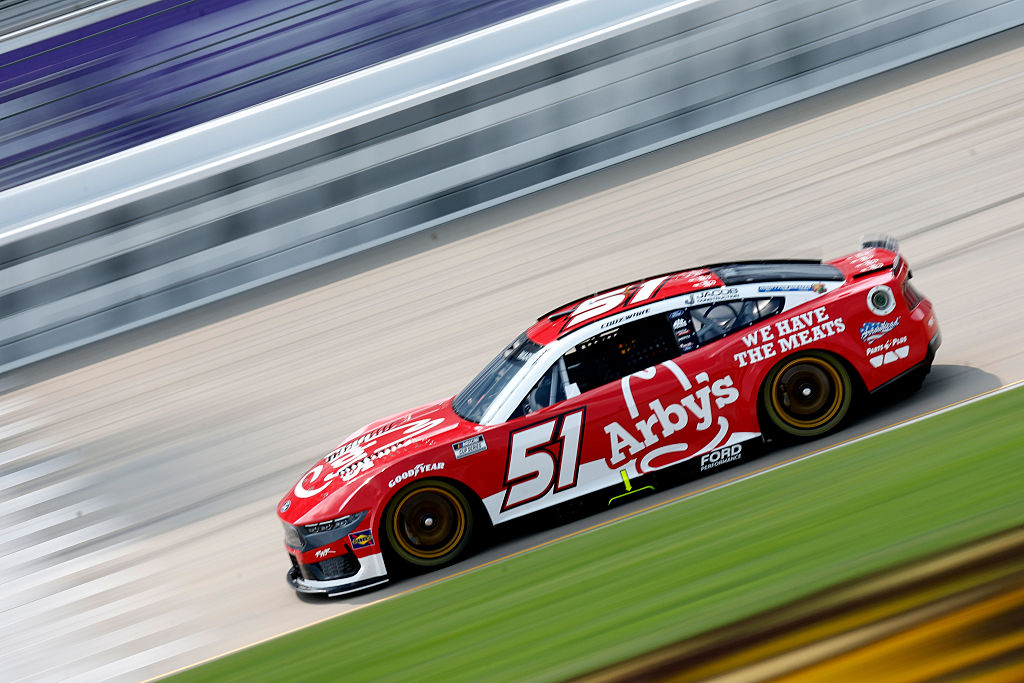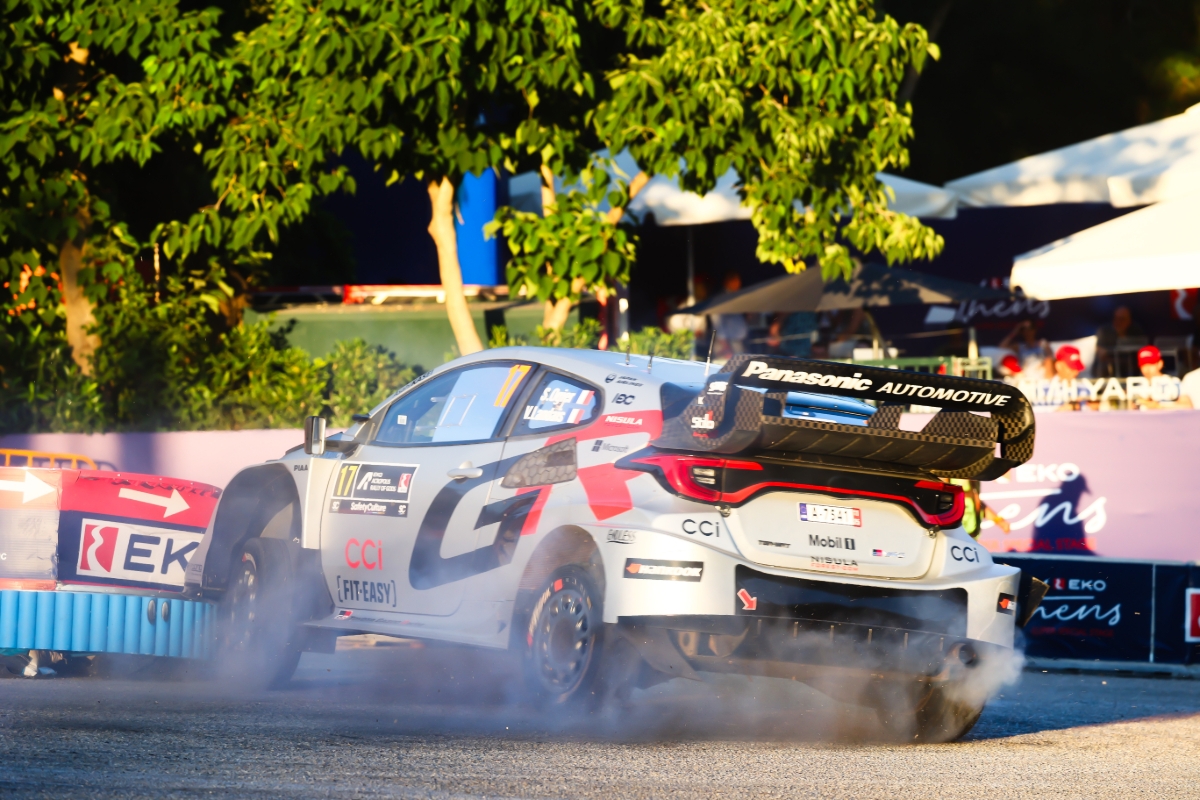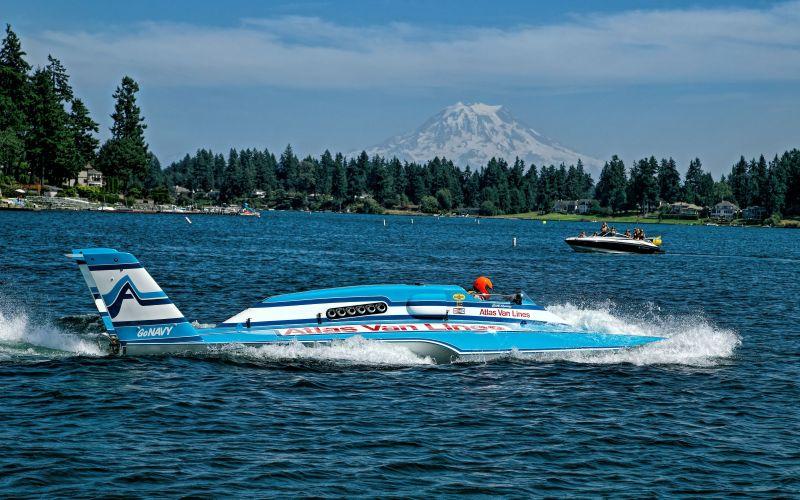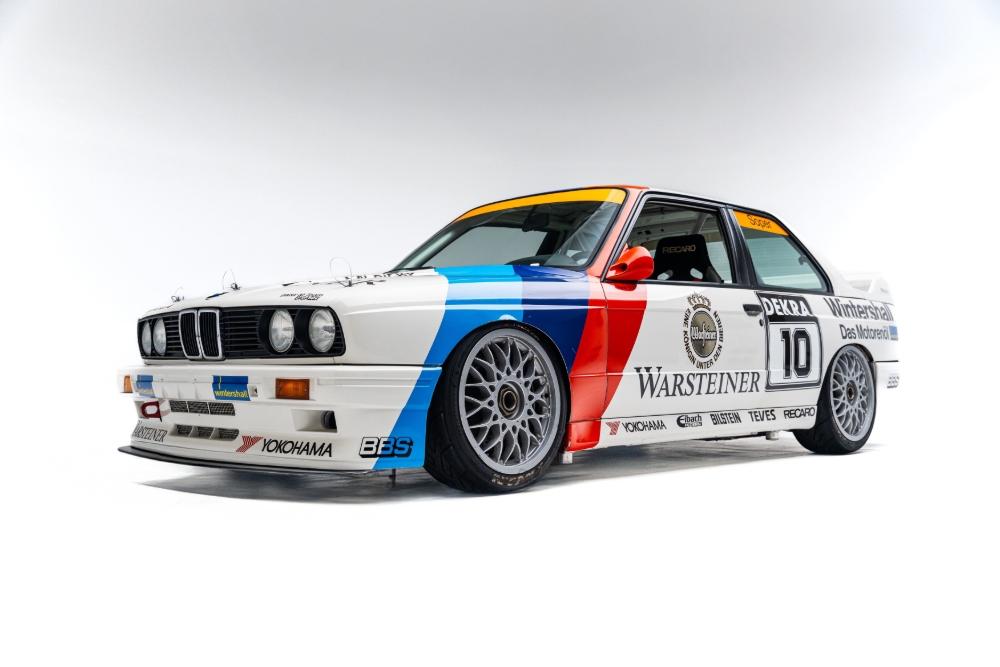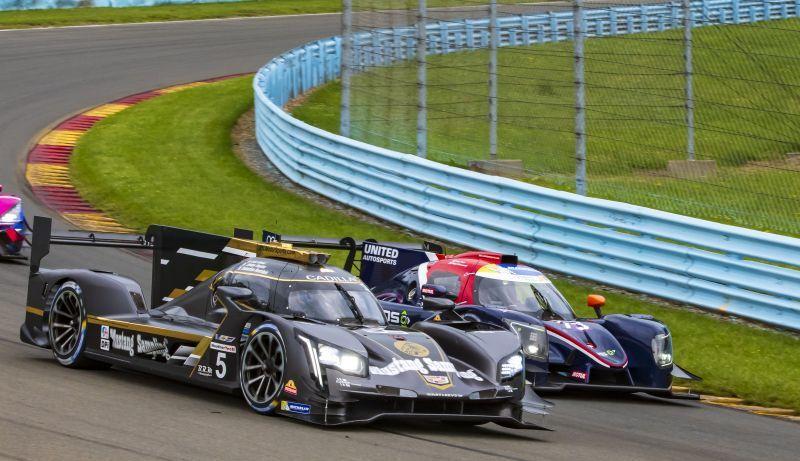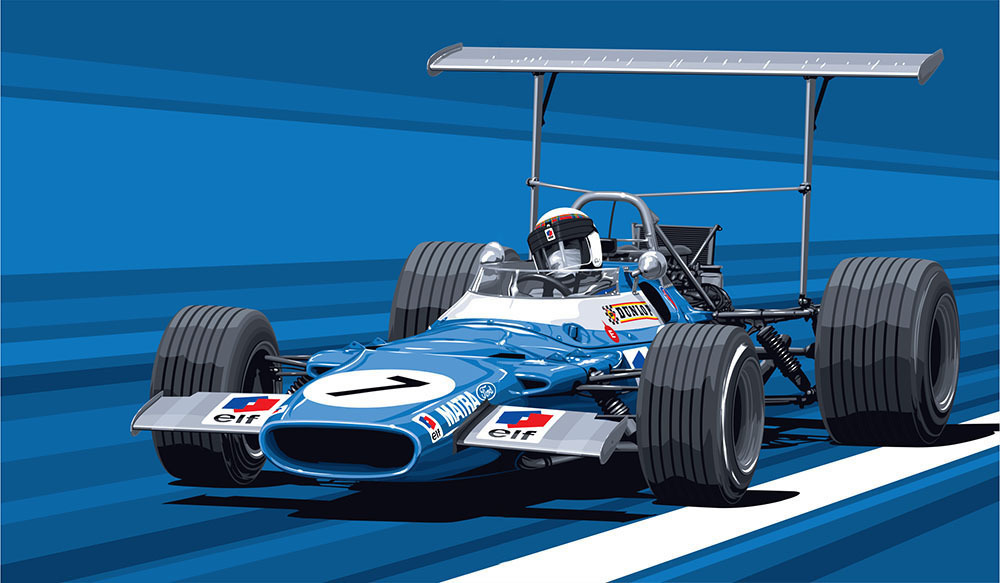
ShareThis is disabled until you accept Social Networking cookies.
From the vault: Bleu Genes
Jackie Stewart was destined for Ferrari in 1968. It was the logical move for a driver established as a top-liner during his first three Formula 1 seasons, but now thoroughly disillusioned by what he described as the elephantine handling of the H16-engined BRM machinery he’d labored with in ’67. Until, that is, his Formula 2 team boss floated a bold idea. Why not race for him in Formula 1
That man was Ken Tyrrell. Hailed by Stewart as the greatest team boss of his era and an "act first, ask questions later" risk taker of the old school, Tyrrell had sent an order to Cosworth for two of its Ford DFV engines for 1968 immediately after witnessing its dominance on debut in the ’67 Dutch Grand Prix. That Tyrrell neither had Formula 1 cars to put them in, nor the £15,000 ($35,000) to pay for the pair of V8s, was a problem to be tackled later.
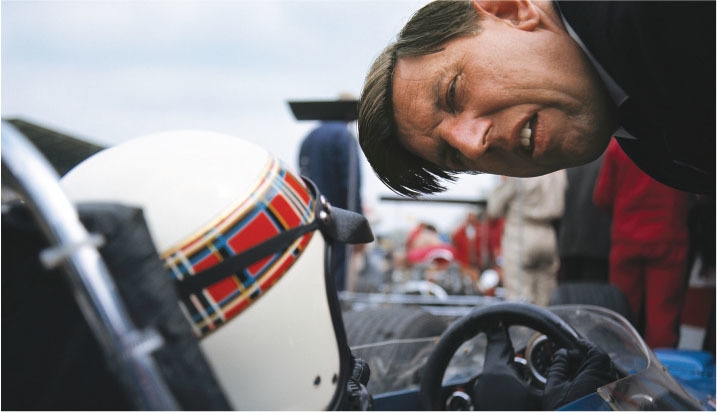
Stewart, already frustrated by what he saw as Ferrari duplicitously also courting Jacky Ickx, was sold on Ken’s idea – or at least he was once an adequate retainer was pieced together, thanks to support from Ford and Dunlop that also covered running the team. After initial skepticism regarding Matra’s F1 credentials, Tyrrell agreed a deal to run its new F1 chassis.
The 1968 season started with the Matra MS9, a test car cobbled together around the MS7 F2 chassis. Stewart retired from third place in the South African Grand Prix at Kyalami with an engine failure in a car painted in a bland green primer. But the Matra MS10, a proper F1 car, was on the way and Tyrrell took delivery on the eve of the non-championship Race of Champions at Brands Hatch.
The Bernard Boyer-designed machine wasn’t exactly cutting edge; unlike the Lotus 49, it didn’t use the "Cossie" as a stressed member. But it was manufactured to high standards with no expense spared. Tyrrell quickly realized Matra’s aerospace engineering excellence could be harnessed, albeit with a need to prevent the worst excesses of over-engineering. The car was 130lbs overweight, partly a result of using suspension and wheels adapted from the Matra MS630 Group 5 sportscar, which left unsprung mass way too high.
Stewart qualified third in the car at Brands, but it wasn’t a pleasant first experience. He was uncharacteristically sawing at the wheel in a car that had a disconcerting vagueness on the straights. He finished sixth after some running repairs to the pedals, but there was optimism about planned changes for the car.
Then, bad luck struck. In late April, Stewart crashed a John Coombs-run Matra MS7 in practice for an F2 race at Jarama, breaking his scaphoid. Warned he could be out for four months, he had a molded plastic brace created to speed up his return, but still he missed the Spanish and Monaco GPs.
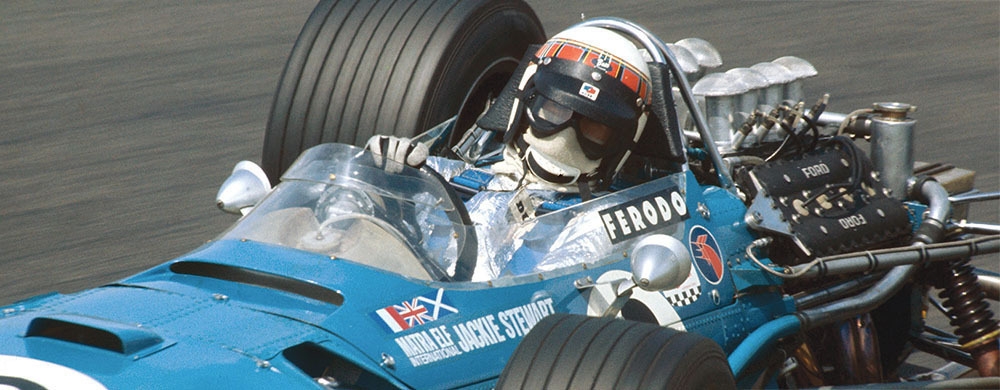
What followed was astonishing. Driving largely left-handed, Stewart would have won the Belgian GP at fearsome Spa-Francorchamps, but for a fuel stop at the end of the penultimate lap that relegated him to fourth. He followed that up with a wet-weather masterclass at Zandvoort driving a newly built MS10 that was lighter and possessed a slightly wider front track – the result of Tyrrell and Stewart pushing Matra hard for improvements. He lapped the entire field, before easing off to let Jean-Pierre Beltoise in the V12-engined works Matra back onto the lead lap.
Further developments followed with a switch to a lighter version of the Hewland gearbox for the French GP, along with added aero detailing. Stewart led before finishing third. For the British Grand Prix, back at Brands Hatch, the MS10 sprouted a rear aerofoil that wasn’t raced, with Stewart struggling to sixth in discomfort with his wrist. He had to be lifted out of the car at the finish.
Then came the defining moment of Stewart’s season, and arguably his career – the 1968 German GP. Stewart obliterated the opposition to win by just over four minutes from Graham Hill’s Lotus. The Dunlop wets played their part, as did Stewart’s virtuosity in a Matra that still wasn’t where it needed to be, and the added grip of running the rear wing. That said, the car’s inherent understeer, the consequence of a chassis too heavy at the front, was probably a blessing that day. As, indeed, was the rain, given the ongoing problems with Stewart’s wrist.
"If it had been a dry race, I wouldn’t have won," says Stewart. "It might have been too much for me, but in the wet it didn’t really worry me at all. The Dunlops were good and the Matra was a good little car. I could have won the world championship in that car."

He struggled at twisty Mosport Park, finishing sixth after a lengthy pit stop to replace a front wishbone, but he then triumphed at Watkins Glen to ensure the championship battle went down to the wire.
A fuel pickup problem at the season finale in Mexico caused by a dislodged chunk of polymer resin sealant allowed Hill to win the title, but Stewart believes without that he would have prevailed. To come so close, despite missing two races, and after taking the gamble on Ken Tyrrell’s scheme, proved his decision to turn his back on Ferrari had been the right move. Doubly so, given Stewart’s physical issue that hindered his single-lap speed, and the fact that the Matra was a good, but not great car, held back by instability under braking. His runner-up spot in the points was a result of Stewart’s excellence on race day.
This meant 1969 was all about evolution. Tyrrell continued under the Matra International banner, and Stewart had a full-time teammate in Beltoise. The new MS80 built on the strengths of the MS10 and tackled its weaknesses. That meant the introduction of self-lubricating spherical bearings lined with Teflon in the suspension, revised weight distribution with the oil tank moved backward, and a larger capacity and wider fuel tank, which carried over the design structure that bolstered the car’s stiffness despite the already-announced ban on such tanks for 1970. So, this was a car that had to work in ’69, given that another fresh design would be required for 1970.
Braking instability was tackled with modified suspension geometry and a greater number of setup options. The MS10’s rocker arm for the front suspension was replaced by coil spring/damper units, which better absorbed bumps. The car was lighter than the final evolution of its predecessor by over 30lbs, and while it would prove not to be a huge step forward pace-wise, it was much more usable.
Stewart’s contribution cannot be overstated. It was difficult to know where Stewart ended and Ken Tyrrell’s team began, they were so well integrated. His outstanding technical feedback and capacity to see the big picture – he was never absorbed by chasing one spectacular lap time and had the vision to ensure the car performed well across a race distance – was essential in guiding Matra’s F1 development.
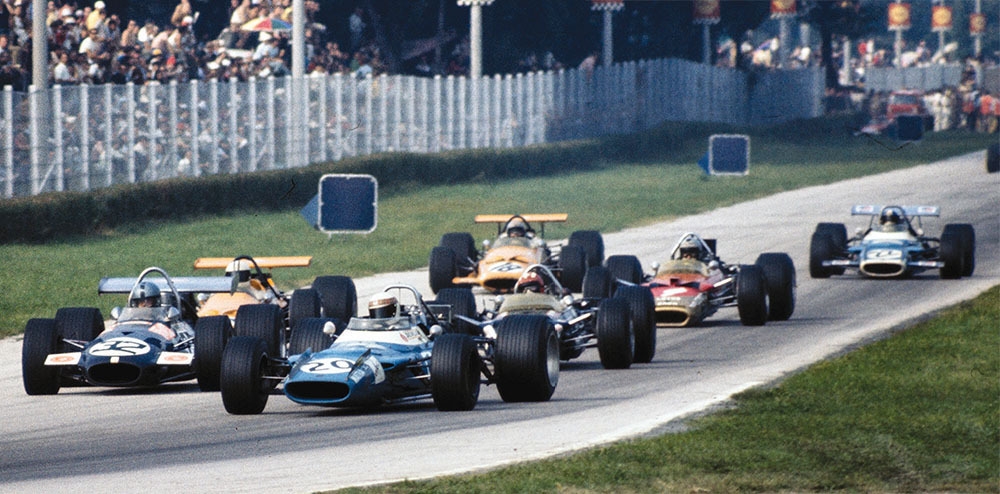
After practicing in the new car at Kyalami, Stewart opted to race its predecessor but then made the switch to the MS80 full time; these days, he regards it as the best car he ever drove. But there was a setback: Matra’s Gerard Ducarouge, working under Boyer, had designed the monocoque to capitalize on the wing-attaching pylons being mounted directly onto the suspension, and when these were banned, Matra lost a significant advantage.
Tyrrell pushed Matra to develop rapidly, but there was the distraction of the all-wheel-drive version of the car, named the MS84. At the time, all-wheel drive was seen as the future and Stewart was convinced of its merits, particularly for the wet. However, despite testing the car, he never raced it.
The Lotus 49 in the hands of Jochen Rindt was the quickest car that season, but Stewart and the Matra MS80 was the best overall package. Stewart took pole position only twice, at Monaco and Clermont-Ferrand, but he won six of the first eight world championship races to seal the drivers’ and constructors’ championships. That tally of success included prevailing in a legendary duel with Rindt at Silverstone after a high-speed crash in practice caused by a stone puncturing a tire, and a brilliant victory over the Austrian on the dash to the line at Monza, built on calculating the right gear ratios to avoid having to change up to fifth in the sprint out of the Parabolica.
Stewart’s brilliance was central to this success. He drove within the car’s limits, rarely shifting at as high revs as he could have done, and driving with a smoothness and pace that surprised teammate Beltoise. Ever calculating, this was a Stewart who had learned from the near miss in ’68, knew he was capable of the title, and left nothing to chance. He was at one with the closely-knit team and formed one of the greatest partnerships in racing with Ken Tyrrell.
Turning down Ferrari for an unlikely alliance with an F1 newcomer and an unproven French manufacturer, with hindsight, seems a natural move. But the project only thrived because of Stewart’s brilliance at the heart of it.
ShareThis is disabled until you accept Social Networking cookies.
Edd Straw
Edd Straw is a Formula 1 journalist and broadcaster, and regular contributor to RACER magazine. He started his career in motorsport journalism at Autosport in 2002, reporting on a wide range of international motorsport before covering grand prix racing from 2008, as well as putting in stints as editor and editor-in-chief before moving on at the end of 2019. A familiar face both in the F1 paddock, and watching the cars trackside, his analytical approach has become his trademark, having had the privilege of watching all of the great grand prix drivers and teams of the 21st century in action - as well has having a keen interest in the history of motorsport. He was also once a keen amateur racing driver whose achievements are better measured in enjoyment than silverware.
Read Edd Straw's articles
Latest News
Comments
Disqus is disabled until you accept Social Networking cookies.
